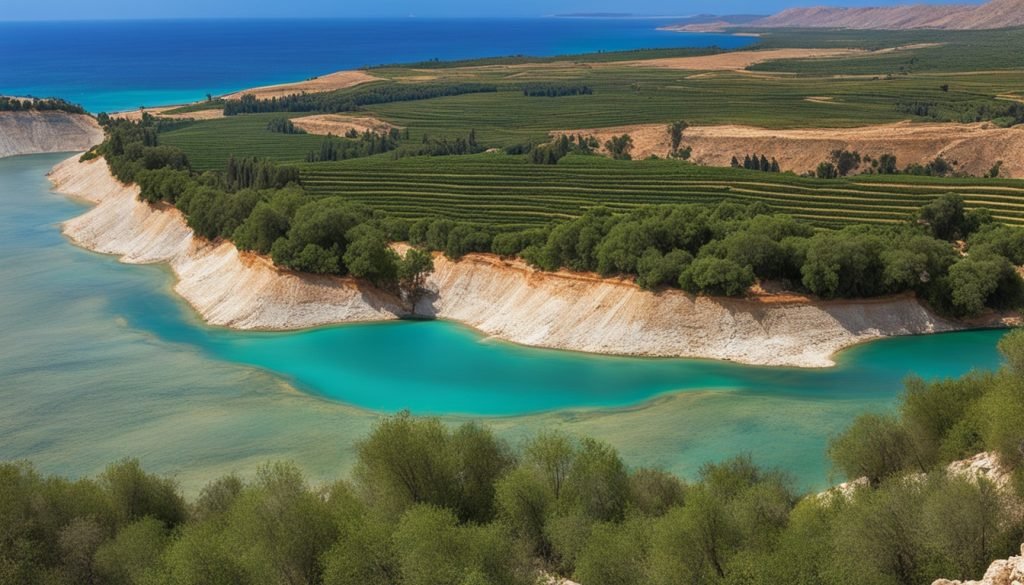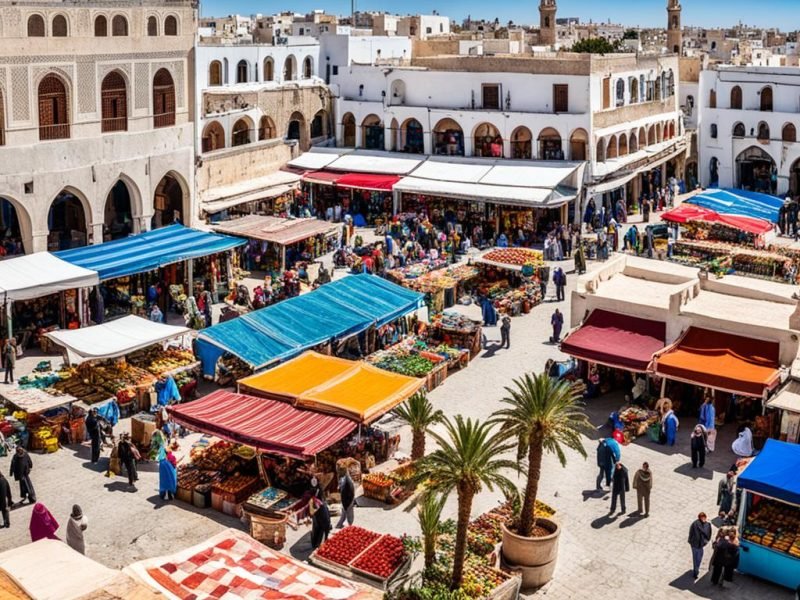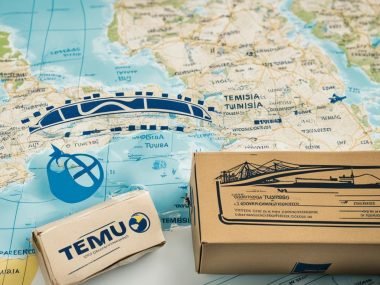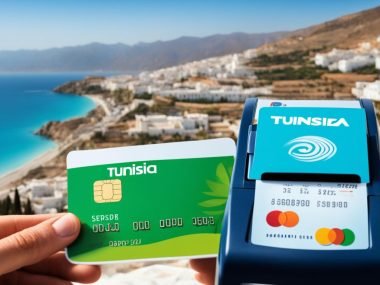Is Tunisia’s wealth truly reflective of its potential and resources?
Tunisia is a country that mixes progress and challenges. It has seen good growth recently. By 2024, its GDP is expected to reach $53.482 billion (nominal) and $178.928 billion (PPP).
With a population of over 12 million in 2023, the GDP per person is about $4,136 (nominal) for 2024. Yet, Tunisia faces a high unemployment rate of 15.3%. Also, about 17.5% of its people live on less than $5.50 per day.
The average monthly wage is $360 in 2023. This shows the income gaps that exist. The country also had foreign reserves worth $8.5 billion in December 2023.
These facts make us think about the real wealth of Tunisia. Does it show the country’s full potential or just a part of it?
Key Takeaways
- Tunisia’s GDP is projected to reach $53.482 billion (nominal) and $178.928 billion (PPP) in 2024.
- The country’s population is estimated at over 12 million, with a per capita income of $4,136 (nominal) in 2024.
- Tunisia faces challenges with an unemployment rate of 15.3% and significant income disparities.
- A notable portion of the population lives on less than $5.50 per day, indicating poverty issues.
- Foreign reserves were documented at $8.5 billion as of December 2023.
Overview of Tunisia’s Economy
Tunisia has been making progress in its economy. It has a goal for a GDP of $53.482 billion in 2024. This goal is important for both the people making policies and those studying them.
The country is ranked 92nd in the world by its GDP. And it’s 81st when you look at it by PPP GDP for 2024. This shows Tunisia’s economy is lively and changing.
Current GDP Figures
In 2024, Tunisia aims for a GDP of $53.482 billion. This shows how hard it’s working to improve. It ranks 92nd worldwide for its nominal GDP and 81st for PPP GDP. The health of its economy is very important. The country wants to grow but also take care of the environment.
Economic Growth Rates
In 2021, the economy grew by 4.2%. This is good news for Tunisia. It means the country is doing well, even when things are tough around the world. This growth helps Tunisia look stronger in the region. It makes people more confident in Tunisia’s future.
Comparison with Regional Economies
Tunisia is growing and is part of the emerging market. It works with nearby countries to help its economy. This teamwork helps it compete and grow, even when tourism faces problems.
| Indicator | Tunisia | Regional Average |
|---|---|---|
| Nominal GDP (2024) | $53.482 billion | $80 billion |
| GDP Growth Rate (2021) | 4.2% | 3.5% |
| Ranking in Nominal GDP | 92nd | 85th |
| Ranking in PPP GDP | 81st | 78th |
Key Industries Driving Wealth
Tunisia’s wealth comes from many strong industries. These sectors grow the country’s GDP and create jobs. This helps local economies.
Petroleum and Mining
The petroleum industry and mining are very important in Tunisia. They have lots of phosphate and iron ore. Exploring and selling these helps Tunisia’s economy a lot.
Tourism Sector
Even after the 2015 terror attacks, tourism in Tunisia is still key. The country’s history and beautiful beaches bring in lots of tourists. This helps make money and gives many people jobs.
Textiles and Footwear
The textile industry and footwear are very important too. They make a lot of money from selling abroad. Tunisia’s good location and skilled people help a lot.
| Sector | Key Contributions |
|---|---|
| Petroleum and Mining | Revenue generation, employment, fiscal stability |
| Tourism | National revenue, job opportunities, cultural tourism |
| Textiles and Footwear | Export revenues, skilled workforce employment, market proximity |
These Tunisia’s industries are very important for its economy. The investment code of 1993 helps these sectors grow. They are really important for Tunisia.
Natural Resources and Their Impact
Tunisia’s economy relies heavily on natural resources. These include phosphates and chemicals, crucial for local and export markets.

Phosphates and Chemicals
Rich phosphate deposits make Tunisia famous. This industry boosts the economy and creates jobs. It meets needs at home and abroad.
Agriculture and Olive Oil Production
Tunisia has fertile land supporting strong agriculture. Olive oil is a key export product. The climate and soil are perfect for making top-quality olive oil. This boosts Tunisia’s trade worldwide.
| Resource | Key Impact | Export Markets |
|---|---|---|
| Phosphates | Economic growth, employment | Europe, Asia |
| Olive Oil | Export revenue, agricultural development | European Union, USA |
Tunisia’s GDP: Breakdown by Sector
Tunisia’s economy is made up of different parts. We need to look at how each part, like farming, industry, and services, adds to the country’s GDP. Knowing this helps us see what’s strong and what needs work in Tunisia’s economy.
Agriculture
The agricultural sector in Tunisia makes up about 10.05% of the GDP. Even though it’s not a big part, farming is still key. It gives jobs, helps feed people, and is important for rural areas.
Industry
The industrial sector in Tunisia adds 21.69% to the GDP. It includes making things, mining, and energy. This part is key for growth, jobs, and new technology. Important fields are clothes making, oil, and mining.
Services
The services sector in Tunisia is the biggest part, with 68.26% of GDP. It has many kinds of jobs like in tourism, phones, finance, and government. This part is very important for making the economy strong. It offers lots of jobs and is big in the country’s GDP.
Here’s a detailed view of the breakdown:
| Sector | Percentage of GDP |
|---|---|
| Agriculture | 10.05% |
| Industry | 21.69% |
| Services | 68.26% |
Knowing how Tunisia’s GDP is divided helps us understand the economy better. It shows the variety of work and points out both chances and problems in each area. This info is key for making good plans for the economy’s future.
Tunisia’s Export and Import Partners
Tunisia’s economy thrives on trade. It keeps a mixed bag of trading actions. It’s about swapping goods and finding key partners for Tunisia’s growth.
Main Export Goods
Tunisia exports are worth about $19.06 billion USD. They send out clothing, semi-made items, farm goods, and phosphate. Each area adds a lot to making money, showing Tunisia’s power in different fields.
Main Import Goods
Tunisia buys around $21.57 billion USD worth of goods. Imports are mainly textiles, machines, energy sources, and foods. Such goods meet the nation’s needs for industry and daily life, making trade even.
Top Trading Partners
France, Italy, Germany, and China are key partners for Tunisia. These ties are vital, aiding steadiness and economic expansion through trade. The diverse locations of these partners highlight Tunisia’s clever trade plans.
| Trading Partner | Exports (USD) | Imports (USD) |
|---|---|---|
| France | $3.8 billion | $4.1 billion |
| Italy | $2.4 billion | $3.6 billion |
| Germany | $2.1 billion | $2.9 billion |
| China | $0.6 billion | $1.5 billion |
Standard of Living in Tunisia
Tunisia’s living standards show many sides, asking for a close look. Observing Tunisia’s income per person shows it’s much lower than in rich countries.
Per Capita Income
Tunisia’s income per person stands a bit low when put side by side with richer lands. It shows an average money in hand of around $360 each month. This highlights how tough economic life can be for a typical Tunisian family.
Cost of Living
Even though things cost less, living in Tunisia can be hard. Items and services cost less compared to places like the USA. But, the lower income often doesn’t cover these costs, making it hard for many Tunisians.

Human Development Index
Tunisia scores ‘high’ on the Human Development Index with 0.731. This shows good progress in learning and health. Still, it doesn’t hide the ongoing problems of poverty and inequality affecting many.
Economic Development and Reforms
Economic reforms in Tunisia have made big changes. We’ve focused on making the market freer, selling state-owned businesses, and improving roads and internet. These efforts are making our economy stronger and more competitive.
Liberalisation Efforts
Since the 1980s, Tunisia has been opening up its economy. We’ve cut tariffs and made it easier to set prices. Our aim is to connect more with the world, increase trade, and draw in investors.
Privatisation Initiatives
We’ve also been working on selling government businesses to private owners. This makes our economy work better, encourages new ideas, and leads to growth. The world’s money experts have praised these steps. They believe our economy will become livelier because of them.
Investment in Infrastructure
Putting money into roads and the internet is another important move. It makes it easier for everyone to get around and communicate. It also creates jobs and sets the stage for more growth in the future.
Challenges Facing Tunisia’s Economy
Tunisia’s economy faces big problems. Unemployment, inflation, and public debt are the main issues. These impact the nation’s economic stability a lot.
Unemployment Rates
Unemployment in Tunisia is a big issue. About 15.3% of people don’t have jobs. This rate is even higher among young people, causing more problems.
Inflation Issues
Tunisia is dealing with inflation problems too. Last year, things cost 6.53% more than before. This makes life harder for everyone and threatens economic balance.
Public Debt Concerns
Public debt in Tunisia is also a big challenge. The country owes about 70.3% of its GDP. This heavy debt stops the government from improving important areas.
We must tackle these issues – unemployment, inflation, and debt. Only then can Tunisia’s economy become stable and grow strong.
Foreign Investment in Tunisia
Investing from abroad is key for Tunisia’s economic growth. It helps the country reach financial goals. With foreign investments worth $37.95 billion, Tunisia is keen to welcome more through new plans.
FDI Inflows
Foreign Direct Investment in Tunisia is on the rise. This shows the government’s efforts to welcome businesses. Investments in areas like manufacturing and energy help diversify the economy. They are vital for ongoing economic progress.
Investment Codes and Incentives
To attract more foreign investment, Tunisia has a special investment code. This offers tax breaks and benefits, making it easier for global businesses to flourish. The goal is to boost competitiveness and create a stable, appealing place for investment.
Role of International Organisations
Help from global agencies greatly aids Tunisia. The IMF and World Bank provide funds and knowledge for reforms. Their support means money and expert advice for sustained growth.
Together, foreign investment, helpful policies, and global aid strengthen Tunisia’s economy. This leads to major economic benefits for the country.
How Rich Is Tunisia?
Tunisia’s wealth isn’t just about one thing. It includes both strong points and big challenges. The country’s economy has grown in a steady way over time.
Important sectors like tourism, clothing, and oil are key. They give many people jobs and add a lot to the GDP. Also, selling things like phosphates and olive oil overseas helps a lot.
To make its economy stronger, Tunisia has made some changes. It has tried to make the country a better place for investments. This has made it easier to see Tunisia’s wealth in a good light.
But Tunisia has some economic problems too. There are too many people without jobs, prices keep going up, and the country owes a lot of money. These issues, along with world economy ups and downs, make things tough.
Below is a table that shows how Tunisia is doing economically:
| Indicator | Value | Year |
|---|---|---|
| GDP (Nominal) | $53.482 billion | 2024 |
| GDP (PPP) | $178.928 billion | 2024 |
| Unemployment Rate | 15.3% | Q2 2022 |
| Foreign Reserves | $8.5 billion | 2023 |
| Inflation Rate | 6.53% | 2022 |
Conclusion
Tunisia is rich in resources and variety. We are working hard towards better market freedom and ownership rights. These actions can greatly improve Tunisia’s future wealth.
To make a better tomorrow, we must tackle big problems like joblessness, rising prices, and huge debts. Facing these challenges head-on is key to our success. A brighter future for Tunisia rides on our ability to fix these issues.
The road ahead depends on our will to make big changes and form strong friendships. By dealing with economic hurdles, we aim for a better quality of life for everyone. Making and strengthening worldwide partnerships is crucial. They bring the help and knowledge needed for growth and balance.
In closing, Tunisia has a bright economic future, despite the tough challenges. We are dedicated to deep reforms and making smart partnerships. Focusing on these important steps will shape a thriving and lasting economy. It promises well-being and a sustainable future for Tunisia.







